Recommended Alternatives
Based on previous studies, the Federal Boulevard bus rapid transit project has a Recommended Alternative.
The recommended alternative will undergo further refinement, incorporating additional elements developed through public engagement, like station area amenities, as the project design advances through fall 2025. Station locations and bus frequencies are subject to change based on your input and through on-going public engagement. CDOT is committed to listening and incorporating your thoughts.
Recommended Alternative | Side-Running Configuration

Map of the Federal Boulevard BRT project showing areas where side-running bus rapid transit and speed and reliability improvements will be made on Federal Boulevard from 120th Avenue to Dartmouth Avenue in Denver.
Side-Running Compared to Center Running BRT Configuration Considerations:
- The capital cost of the recommended alternative side-running BRT is 25% to 35% less than center-running BRT configurations.
- The recommended alternative side-running BRT would require modification to the outside curbs and sidewalks, while much of the street would not require reconstruction. Center-running would require reconstructing the entire roadway section to account for the center stations increasing cost and construction time.
- Travel time estimates are comparable between the recommended side running configuration and a center running configuration.
- Center-running and side-running BRT configurations would both require right-of-way acquisition at bus stations. The recommended alternative side running configuration would require less right-of-way and therefore cost less and have fewer impacts to adjacent properties.
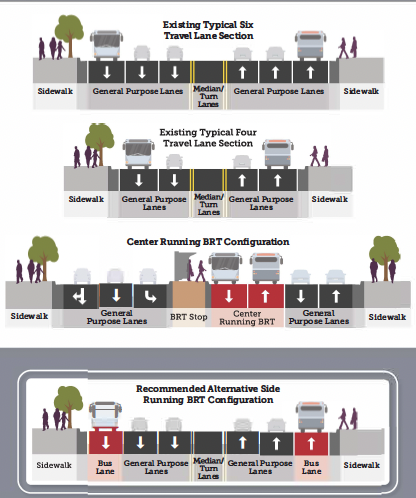 Four cross-sections showing the existing typical six-lane travel lane section, the existing typical four-travel lane section, center running BRT configuration and the recommended alternative - side-running BRT configuration.
Four cross-sections showing the existing typical six-lane travel lane section, the existing typical four-travel lane section, center running BRT configuration and the recommended alternative - side-running BRT configuration.
Recommended Alternative | Transit Service Proposal
Reimagine RTD Optimization Map
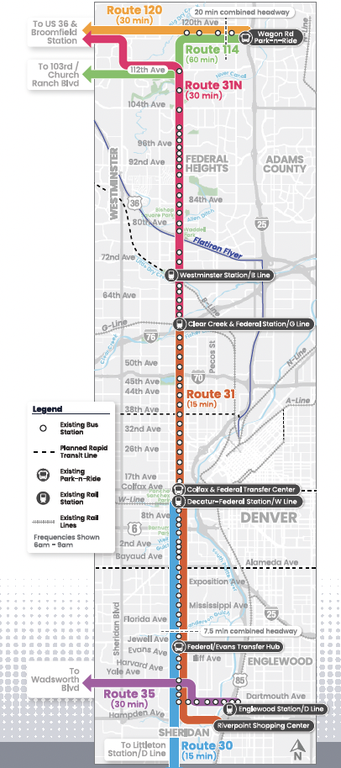 RTD’s planned bus routes and frequencies included in their System Optimization Plan (SOP). The SOP was adopted by the RTD Board of Directors and is RTD’s plan for service in 2027. The plan includes three routes along Federal Boulevard. The first route connects the G Line to 112th Avenue. The second route connects the G Line to Hampden Avenue and the third route connects Colfax Avenue and the W Line to Littleton.
RTD’s planned bus routes and frequencies included in their System Optimization Plan (SOP). The SOP was adopted by the RTD Board of Directors and is RTD’s plan for service in 2027. The plan includes three routes along Federal Boulevard. The first route connects the G Line to 112th Avenue. The second route connects the G Line to Hampden Avenue and the third route connects Colfax Avenue and the W Line to Littleton.
Service Plan & Stations Map
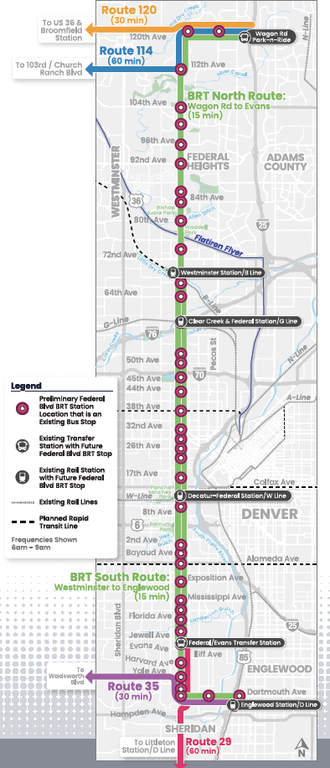 Recommended service plan included in the Federal Boulevard BRT preliminary design and NEPA project. It illustrates two bus routes with 15-minute frequencies each that travel along Federal Boulevard The first is initiated at the Wagon Road Park and Ride at 120th Avenue and I-25. It travels along 120th to Federal Boulevard and then along Federal Boulevard between 120th Avenue and Evans Avenue. The second is initiated at the Englewood light rail station. It travels along Dartmouth Avenue to Federal Boulevard and then along Federal Boulevard between Dartmouth Avenue and Westminster Station. Together, these two routes would provide a 7.5-minute frequency between Evans Avenue and Westminster Station and a 15-minute service north of Westminster Station and south of Evans Avenue.
Recommended service plan included in the Federal Boulevard BRT preliminary design and NEPA project. It illustrates two bus routes with 15-minute frequencies each that travel along Federal Boulevard The first is initiated at the Wagon Road Park and Ride at 120th Avenue and I-25. It travels along 120th to Federal Boulevard and then along Federal Boulevard between 120th Avenue and Evans Avenue. The second is initiated at the Englewood light rail station. It travels along Dartmouth Avenue to Federal Boulevard and then along Federal Boulevard between Dartmouth Avenue and Westminster Station. Together, these two routes would provide a 7.5-minute frequency between Evans Avenue and Westminster Station and a 15-minute service north of Westminster Station and south of Evans Avenue.
Recommended Alternative Service Plan Considerations:
- Previous study recommendations including RTD’s Standard Operating Procedure (SOP)
- Existing and future travel demand and origin and destination travel patterns
- Layover and recovery time for bus operators
- Annual operating cost is approximately $400,000 more than SOP (2029 dollars)
Recommended Alternative Station Location Considerations:
- Addresses recommendations from previous plans
- Builds on existing passenger activity
- Incorporates future ridership projections
- Community goals as defined in previous plans
- Existing passenger activity
- Future passenger activity projections
- Access to stations and speed of service along the corridor
- Considers accessibility for mobility needs
- ADA passenger activity
- Transit transfer and connection points
- Existing and future population and employment
Shelter Example 1
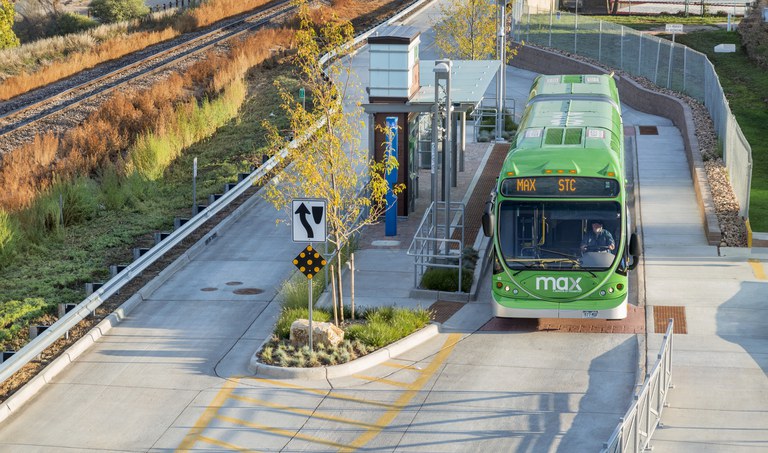 MAX bus rapid transit station in Fort Collins, CO - The shelter at the MAX bus rapid transit station in Fort Collins, Colorado. It features stainless steel pillars and a frosted angled shelter top. The station includes benches, ticket vending machines and a map.
MAX bus rapid transit station in Fort Collins, CO - The shelter at the MAX bus rapid transit station in Fort Collins, Colorado. It features stainless steel pillars and a frosted angled shelter top. The station includes benches, ticket vending machines and a map.
Shelter Example 2
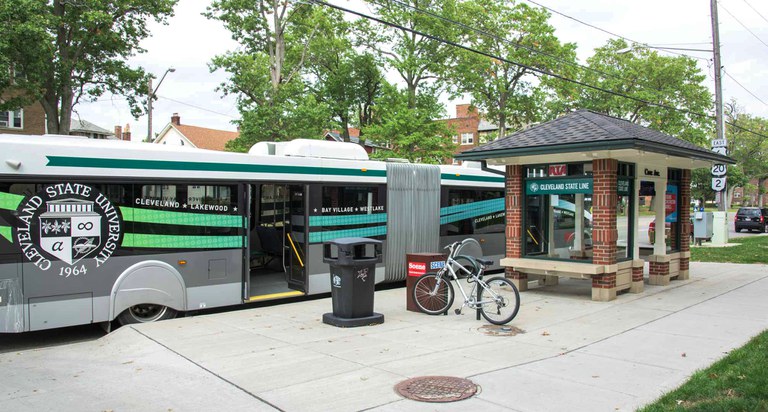 Articulated bus rapid transit at station in Cleveland, Ohio - The shelter features a canopy, benches and accessible seating, a bike rack and maps.
Articulated bus rapid transit at station in Cleveland, Ohio - The shelter features a canopy, benches and accessible seating, a bike rack and maps.
Shelter Example 3
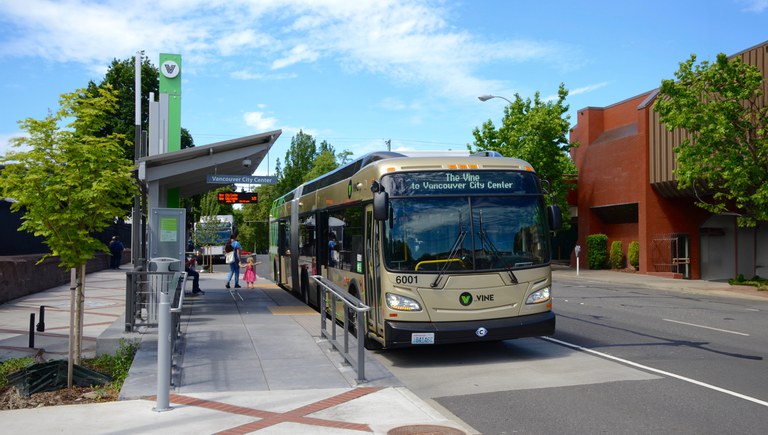 Articulated bus rapid transit at station in Vancouver, Wash. - Many shelter amenities are shown, including real-time schedule information, benches, accessible seating and boarding, among other amenities.
Articulated bus rapid transit at station in Vancouver, Wash. - Many shelter amenities are shown, including real-time schedule information, benches, accessible seating and boarding, among other amenities.
Shelter Example 4
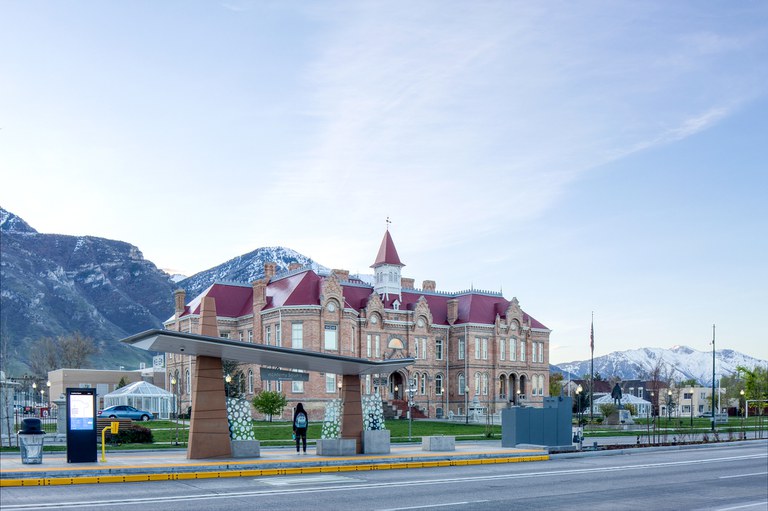 Bus rapid transit station in Salt Lake City, Utah - The shelter is shown featuring multiple amenities, including real-time schedule information and route maps, accessible benches and seating, and space for art opportunities.
Bus rapid transit station in Salt Lake City, Utah - The shelter is shown featuring multiple amenities, including real-time schedule information and route maps, accessible benches and seating, and space for art opportunities.
Shelter Example 5
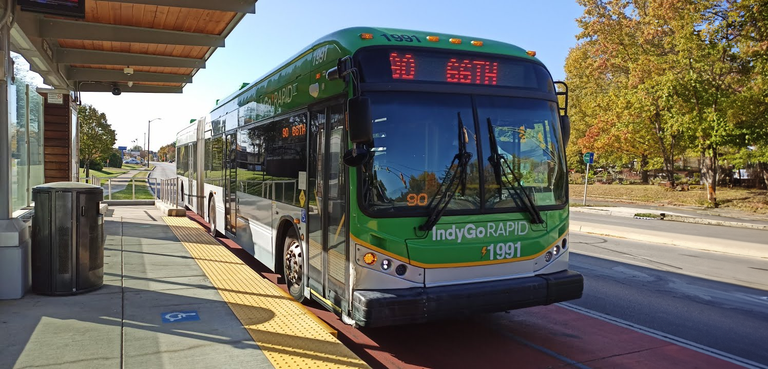 Articulated bus rapid transit at station in Indianapolis, Indiana - The shelter features accessible bus entryways and seating, a canopy and trash receptacles, among other amenities.
Articulated bus rapid transit at station in Indianapolis, Indiana - The shelter features accessible bus entryways and seating, a canopy and trash receptacles, among other amenities.
Shelter Example 6
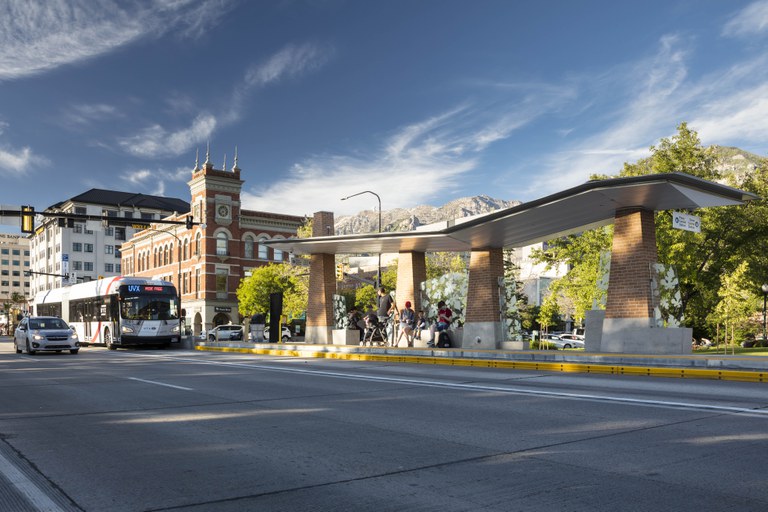 Bus rapid transit station in Provo, Utah - Amenities displayed at the shelter include a canopy, accessible bus entryways and seating, a map case, and space for art opportunities.
Bus rapid transit station in Provo, Utah - Amenities displayed at the shelter include a canopy, accessible bus entryways and seating, a map case, and space for art opportunities.
Feedback Survey
Please complete the survey below to provide the project team feedback on the above recommendations and alternatives.